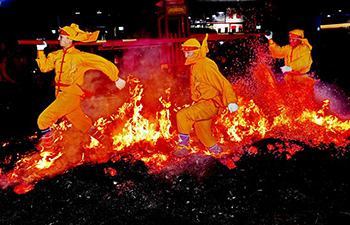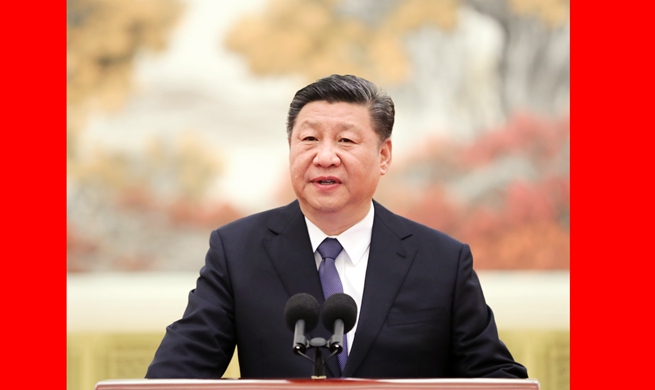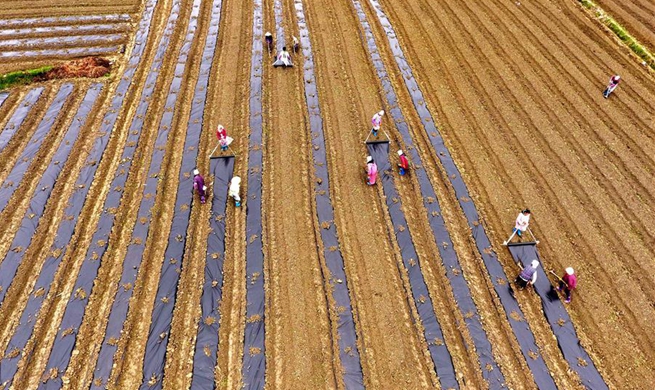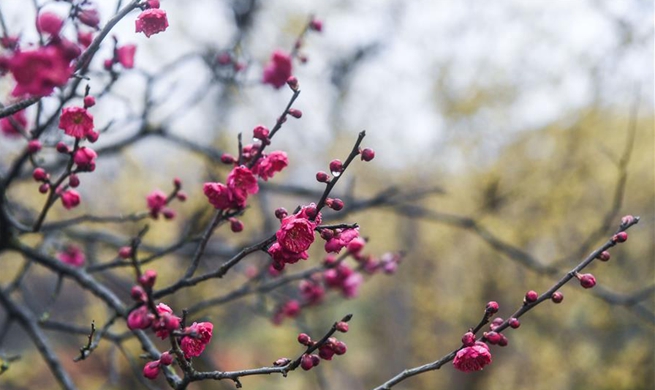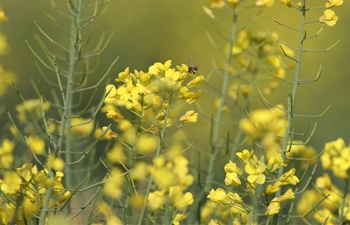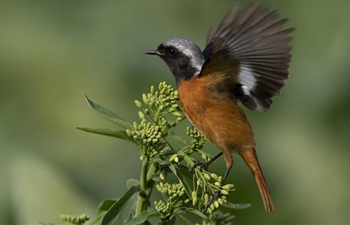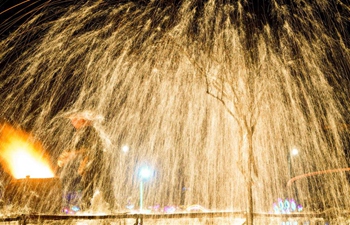NAIROBI, Feb. 21 (Xinhua) -- Enclosed in sheds made of timber, iron sheets and concrete on the farm in Bisil, Kajiado County, are Friesian and Ayrshires animals.
Some are munching hay placed in the feeders while others are lying on their stomachs on cow mattresses chewing the cud or licking salt blocks hanged at various places in the dairy unit.
Some years back, such a setting on farms in Kajiado, a bedrock of pastoralists from the Maasai community was unimaginable, but this is now the modern reality as an increasing number of herders take up zero-grazing for more income.
The herders, a majority of whom own huge tracts of land, are steadily learning the mode of farming as they embrace the hybrid animals and ditch the local breeds that they have kept for eons.
"I love zero-grazing because you only keep a small number of animals but the amount of milk you get is more. From 10 animals you get over 200 liters of milk every day. It's what one would milk from 100 animals of the local breeds," said Bernard Sankei
Until four years ago, Sankei was one of the biggest cattle-keepers in Bisil, rearing some 350 cattle of the indigenous Zebu breed, tens of goats and sheep.
The animals would daily roam on his 100 acres and beyond in search of pasture and return to their kraal in the evening.
His turning point, however, was in 2015 when a severe drought hit most parts of the east African nation making pasture for animals and food for human scarcer.
He lost some of his animals to the drought. Like many other pastoralists in the region, he was forced to sell the rest to meat traders from the capital Nairobi for as little as Sh5,000 (50 U.S. dollars) to avoid losses.
"It occurred to me that I had to change the way I was keeping cattle because pastoralism was no longer viable. I attended training on zero-grazing offered by the county government and its partners to learn what I needed to do," he recounted.
The farmer sold part of his land and used the proceeds to buy five Friesian animals from Kiambu on the outskirts of Nairobi, build dairy units and grow pasture.
"I started with five animals, now I have 12, including calves, having sold some and I get 150 liters of milk that I sell in Kajiado Town at 0.60 dollars per liter. The market is insatiable due to the growing population," he said, noting that he could not sustain market with milk from the indigenous breed.
The change of tide has also benefited Stephen Oloishona, who keeps some eight hybrid animals and supplies milk to a factory in the county.
"I get 100 liters from my six animals every day and sell some to a hotel in Isinya and to a nearby factory. This would not have been possible if I continued with the old practice of herding," said Oloishona.
Like Sankei and other former pastoralists who have embraced zero-grazing, Oloishona has become an expert in silage making, growing fodder grasses that include Boma Rhodes to make hay, embraced artificial insemination for breeding his animals and record-keeping.
"Over the years, pastoralism has stood the test of time but it is increasingly becoming expensive to herders as the weather becomes too unpredictable, land use changes, with real estate taking up most of the space and children who used to herd the cattle go to school. Pastoralists certainly now have to change their ways and zero-grazing is the way to go," said Felix Akatch, a livestock specialist from Egerton University.


